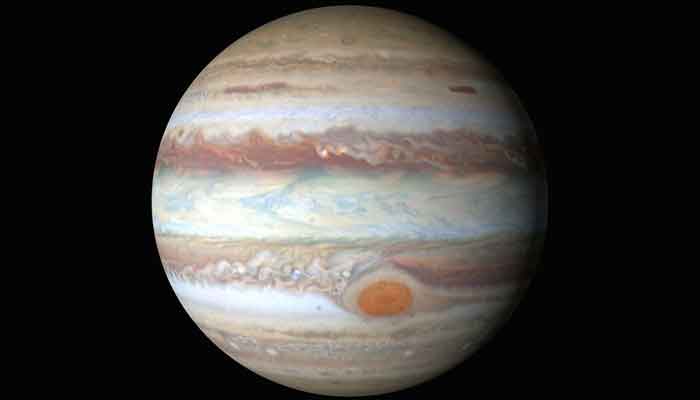Jupiter was considerably larger and possessed a much stronger magnetic field long before it evolved into the colossal planet it is today, according to a recent study that looked back in time to reveal the planet’s appearance in its nascent years.
According to new calculations, Jupiter was twice its current size and boasted a magnetic field at least 50 times stronger than its present-day counterpart, just 3.8 million years after the formation of the solar system’s first solid objects. These findings were reported in a paper published on Tuesday, May 20, in the journal Nature Astronomy, as reported by Space.com.
“Our ultimate goal is to understand where we come from, and pinning down the early phases of planet formation is essential to solving the puzzle,” said Konstantin Batygin, a professor of planetary science at the California Institute of Technology, who led the new study, in a statement. “This brings us closer to understanding how not only Jupiter but the entire solar system took shape.”
To uncover Jupiter’s earliest planetary conditions, Batygin and his team largely circumvented the assumptions of current planetary formation models, such as the rate at which young planets accreted primordial gas. Instead, they focused on Amalthea and Thebe, two of Jupiter’s lesser-known moons.
Scientists believe that the slightly tilted orbits of these tiny satellites, which circle quite close to Jupiter, have remained unchanged since the early days of the solar system. The latest study posits that by examining such minute orbital tilts, researchers were able to reverse-engineer Jupiter’s initial size and magnetic strength.
According to the team’s estimations, youthful Jupiter had a volume that could have encompassed over 2,000 Earths and a radius that was nearly twice its current size. The planet’s present volume is sufficient to accommodate 1,321 Earths.
The study highlights that Jupiter’s birth and early growth played a “pivotal role” in shaping the general architecture of the solar system, even though it does not specifically delve into how such an enormous Jupiter would have influenced the early solar system.



